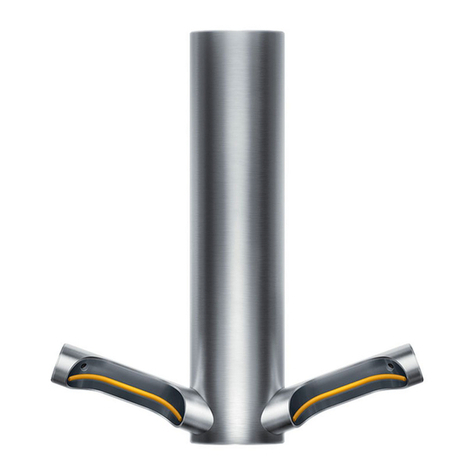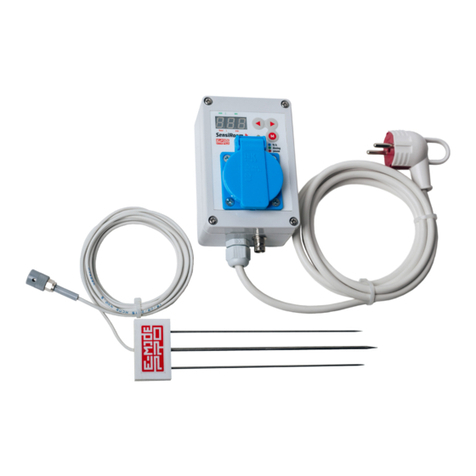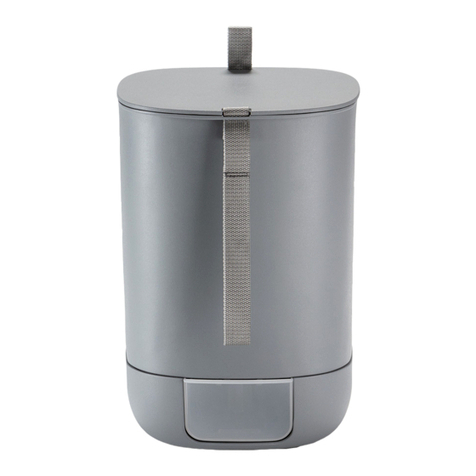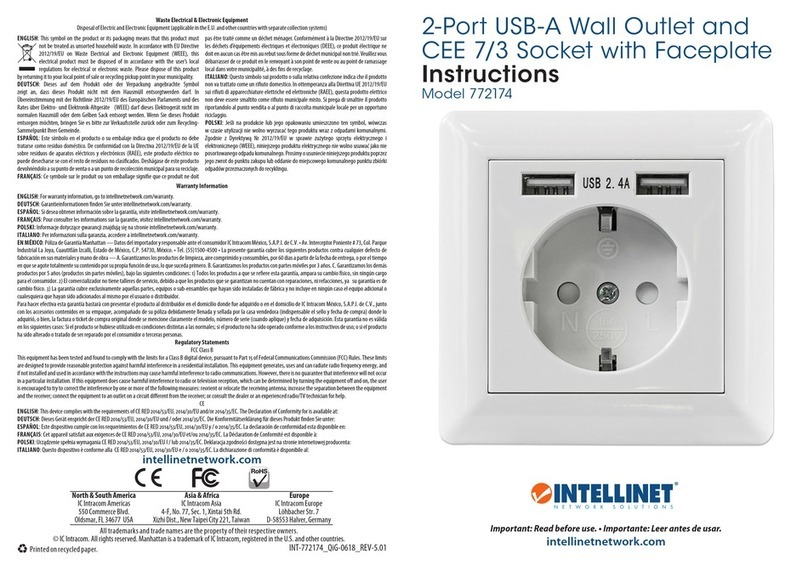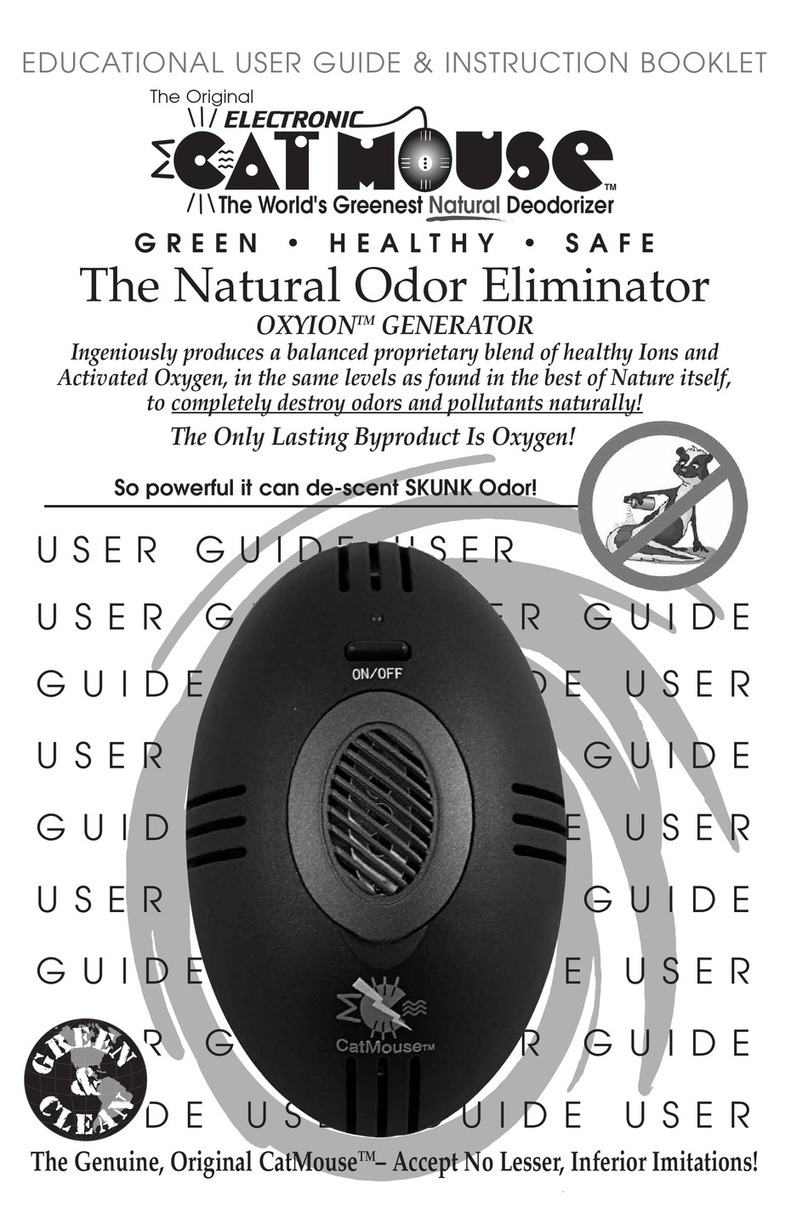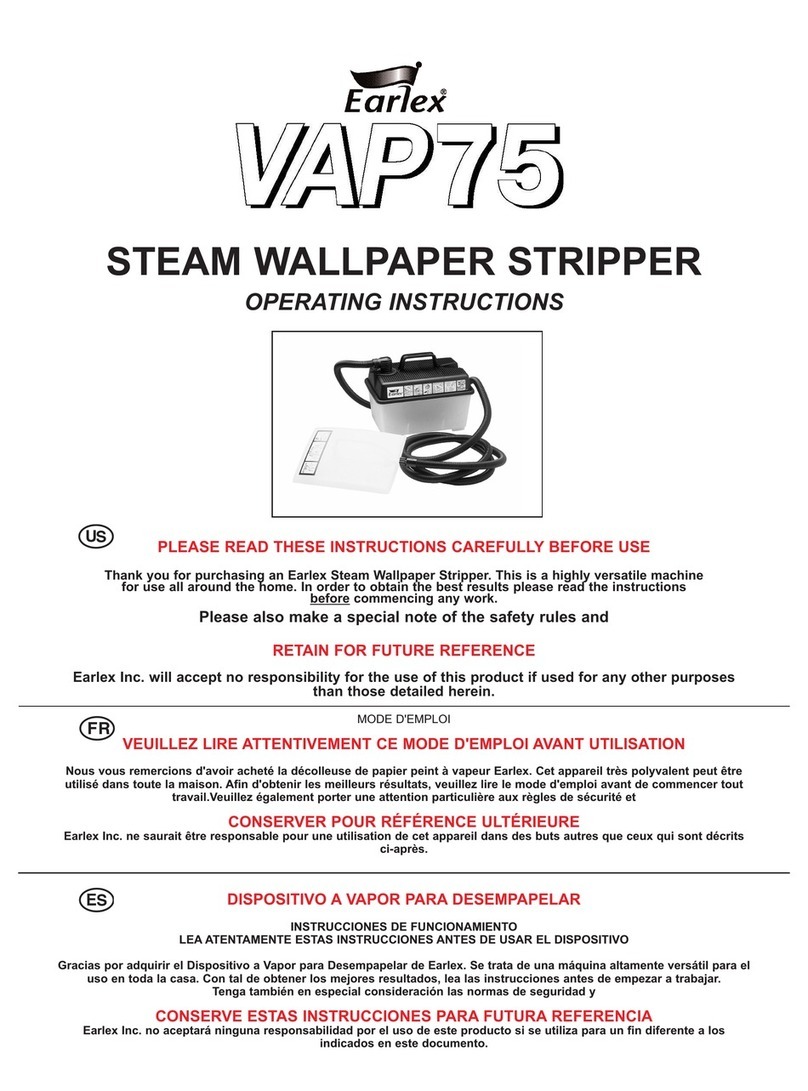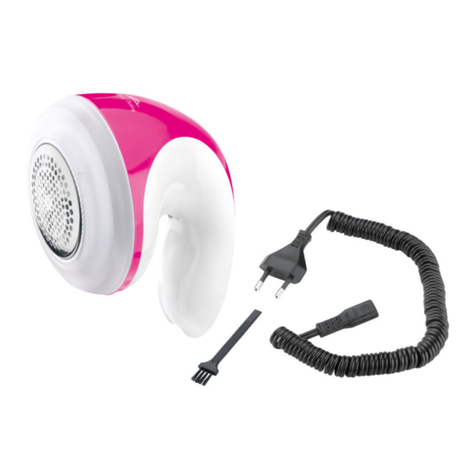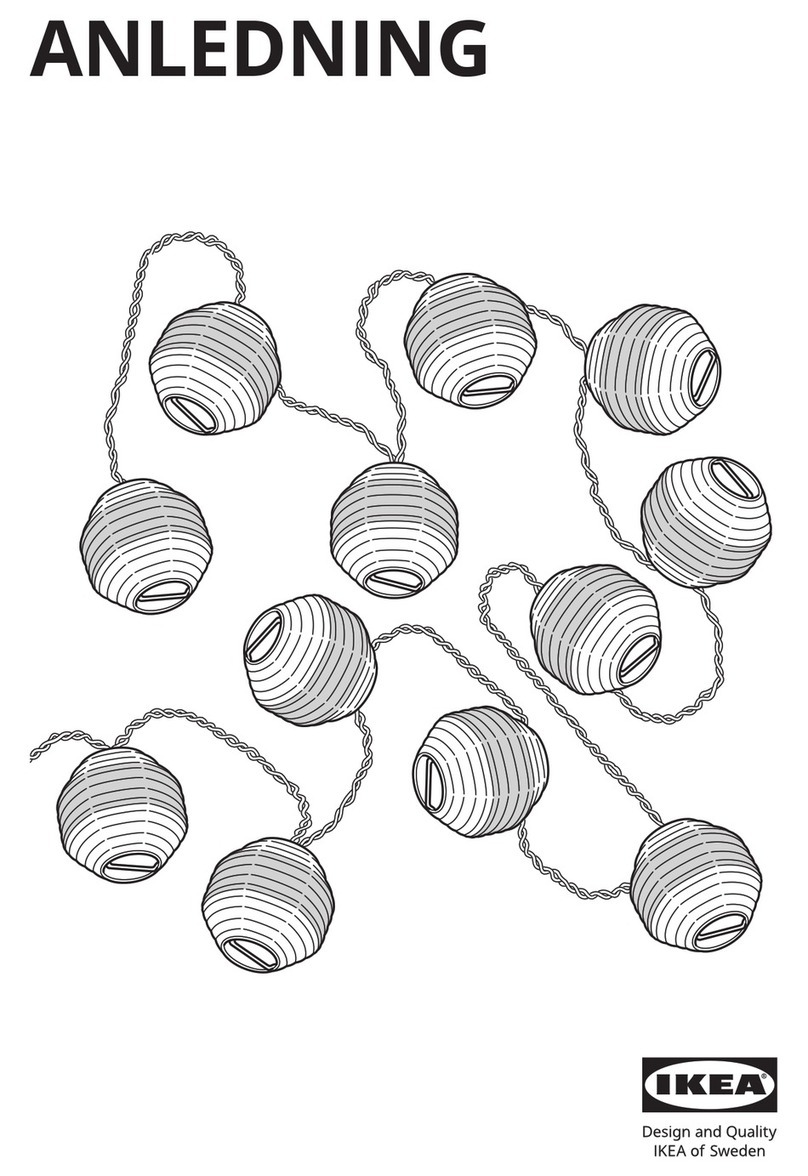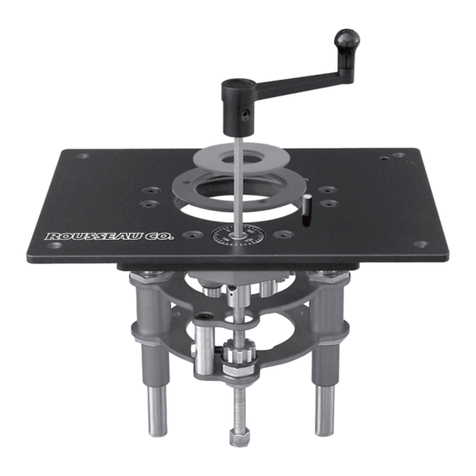ROOTS HVFRACH-13 Instruction Manual

EN ISO 11611:2007
Class 2 - A1
EN ISO 11612:2008
A1 B1 C2 D0 E3 F1 IEC 61482-2:2009
ATPV = 10.2 cal/cm2
Class 1
EN 1149-5:2008
0493
EN 13034:2005
+A1:2009 Type 6 EN 471:2003
+ A1:2007
HVFRACH-13
INSTRUCTIONS FOR THE USER / INSTRUCTIES VOOR DE GEBRUIKER
INSTRUCTIONS POUR L’UTILISATEUR / ANWEISUNGEN FÜR DEN GEBRAUCHER
High visibility protective suits (reference : HVFRACH-13) for industrial workers exposed to: Heat and fl ame (including welders) : EN ISO 11612 and EN ISO 11611 / Electric arc : IEC 61482-2 / Static electricity : EN1149-5 / Chemicals : EN 13034 type 6 / Limited visibility : EN 471
Hoge zichtbaarheid beschermpakken (referentie : HVFRACH-13) voor werknemers blootgesteld aan: Hitte en vuur (inclusief lassers) : EN ISO 11612 en EN ISO 11611 / Vlamboog : IEC 61482-2 / Statische elektriciteit : EN1149-5 / Chemische producten : EN 13034 type 6 / Beperkte zichtbaarheid : EN 471
Vêtements de protection haute visibilité (référence : HVFRACH-13) pour travailleurs exposés à: Chaleur et feu (y compris soudeurs) : EN ISO 11612 and EN ISO 11611 / Arc électrique : IEC 61482-2 / Electricité statique : EN1149-5 / Produits chimiques : EN 13034 type 6 / Visibilité limitée : EN 471
Schutzanzüge mit hoher Sichtbarkeit (Referenz: HVFRACH-13) für Arbeitsnehmer, die ausgesetzt sind an: Hitze und Flammen (einschließlich Schweißer): EN ISO 11612 und EN ISO 11611 / Lichtbogen: IEC 61482-2 / Statische Elektrizität: EN1149-5 / Chemische Produkte: EN 13034 Typ 6 / Eingeschränkte Sichtbarkeit: EN 471
60910-ROO_gebr_ HVFRACH-13_viertalig.indd 1 29-11-13 10:12

2013-09-23
2
60910-ROO_gebr_ HVFRACH-13_viertalig.indd 2 29-11-13 10:12

CONTENTS
ENGLISH P. 4
NEDERLANDS P. 10
FRANÇAIS P. 16
DEUTSCH P. 23
3
2013-09-23
60910-ROO_gebr_ HVFRACH-13_viertalig.indd 3 29-11-13 10:12

This range of garments is designed in line with the applicable (European) standards EN 340
(2003), EN ISO 11612 (2008), EN ISO 11611 (2007), EN 1149-5 (2008), IEC 61482-2 (2009),
EN 13034 (2005) + A1 (2009) and EN 471 (2003) + A1 (2007). Type testing has shown that
the clothing complies with the fundamental requirements as described in European Directive
89/686/EEC on personal protective equipment.
Please make sure to read these instructions carefully before the fi rst use of the garments
and keep them for future reference.
SPECIFICATIONS
2013-09-23
4
60910-ROO_gebr_ HVFRACH-13_viertalig.indd 4 29-11-13 10:12

Specifi cations
EN 1149-5 : antistatic clothing
All garments from this range comply with the standard EN1149-5
(antistatic protective clothing – material tested according EN1149-
3). This means that the garments are designed to discharge
electrostatic charges in order to prevent the generation of
sparks that could cause fi re and/or explosions. However, these
requirements are not suffi cient in oxygen enriched fl ammable
atmospheres. Neither are the garments designed to protect against
mains voltages.
EN ISO 11612 : protective clothing to heat and fl ames
The clothing also complies with standard EN ISO 11612. The
performance levels are : A1, B1, C2, D0, E3 and F1. A1 means that
the fl ame spread is tested according the fi rst procedure described
in the standard; B indicates the performance for convective heat,
where 1 is the lowest level applicable for limited risks (highest level
is 3); C means the performance for radiant heat, where 1 is the
lowest level applicable for limited risks and 4 is the highest level; D
is the performance level for protection against molten aluminium
where 1 is the lowest level applicable for limited risks (highest
level is 3, 0 means no protection); E stands for the performance
level for protection against molten iron where 1 is the lowest level
applicable for limited risks and 3 is the highest level; F is the level
for protection against contact heat, where 1 is the lowest level
for limited risks (highest level is 3). This means that the wearer
is protected against short contacts with a fl ame as well as (up to
a certain point) against convection, radiation and contact heat as
well as molten iron spatter.
EN ISO 11611 : welding garments
This clothing complies with the requirements of standard EN ISO
11611 (protective clothing for use in welding) and will therefore
protect you during welding activities (or similar risks). The
classifi cation A1 means that to test the fl ame spread procedure 1
of EN15025 has been used. Class 1 means that the garments have
been designed to protect you during normal welding activities
(or similar activities) during which small to medium quantities of
splashes of molten metal are produced. Class 2 offers a higher level
of protection and is designated for activities during which larger
quantities of splashes are produced.
Criteria for choice based on the type of process.
Class 1 - Manual welding techniques with light formation of spatters
and drops, for example:
n Gas welding
n TIG welding
n MIG welding
n Micro plasma welding
n brazing
n Spot welding
n MMA welding (with rutile-covered electrode)
Class 2 - Manual welding techniques with heavy formation of spatters
and drops, for example:
n MMA welding (with basic or cellulose-covered electrode)
n MAG welding (with CO2 or mixed gases)
n MIG welding (with high current)
n Self-shielded fl ux cored arc welding
n Plasma cutting
n Gouging
n Oxygen cutting
n Thermal spraying
Criteria for choice based on the work environment.
Class 1 - Machine operation, for example:
n Oxygen cutting machines
n Plasma cutting machines
n Resistance welding machines
n Machines for thermal spraying
n Bench welding
Criteria for choice based on the work environment.
Class 2 - Machine operation, for example:
n In confi ned spaces
n At overhead Welding/cutting or in comparable constrained
positions.
IEC 61482-2 : protective clothing against the thermal hazards of
an electric arc ATPV = 10.2 cal/cm2 is the result of the open arc
test. ATPV means Arc Thermal Performance Value and is the
incident energy that results in a 50% probability that suffi cient
heat transfer through the tested specimen is predicted to cause
the onset of a second degree skin burn injury without break open
of the material. Class 1 means that the material and clothing has
been tested with an exposure at 4 kA during 0,5 s and class 2 with
an exposure at 7 kA during 0,15 s. Both material and clothing have
been tested to the open arc and box test.
EN 13034 : limited protection against chemicals.
The classifi cation is Type 6 for coveralls, jackets and trousers.
The garments were subject of a spray test on the full suit and are
thus designed to protect the wearer against a mist of chemicals.
Type 6 means that the protection is limited to small amounts of
splashes of chemicals. The garments are certainly not gas or liquid
tight. In the table you will fi nd the test results for the garments and
for some chemicals.
5
2013-09-23
60910-ROO_gebr_ HVFRACH-13_viertalig.indd 5 29-11-13 10:12

Maximum
performance level
Achieved
performance level
Abrasion resistance class 6 class 6
Tear resistance class 6 class 4
Tensile strength class 6 class 5
Puncture resistance class 6 class 3
Liquid repulsion class 3 H2SO4 30% : class 3
NaOH 40% : class 3
Resistance to
penetration of liquids class 3 H2SO4 30% : class 3
NaOH 40% : class 3
Seam strength class 6 class 5
EN 471 : high visibility garments :
The combination of high quality fl uorescent fabric with retro-
refl ective tapes signals your presence as well during the day as at
night in the beam of a light source (e.g. the headlights of a car).
EN471 : high visibility warning clothing
X : class related to the surface of both
fl uorescent and retro-refl ective material (*)
Y : performance level of the retro-refl ective
material, in this case Y = 2 (2 being the highest
performance level)
(*) required surface :
class 3: fl uorescent surface:
retro-refl ective surface:
min. 0,80m2
min. 0,20m2
class 2: fl uorescent surface:
retro-refl ective surface:
min. 0,50m2
min. 0,13m2
class 1: fl uorescent surface:
retro-refl ective surface:
min. 0,14m2
min. 0,10m2
Test op mannequin
The coverall has been tested on a manikin to determine the
behaviour of the clothing when subject to a fl ame engulfment. The
test was carried out by BTTG (at their Altrincham, UK laboratory)
on the RALPH manikin. The RALPH manikin test has been
developed to provide information on the fl ammability and heat
transfer performance of clothing systems when subjected to fl ame
envelopment such as might only reasonably be expected to occur
under ‘emergency’ conditions. It is essentially intended to compare
one clothing system with another, it does not purport to provide
information in terms of the ‘survivability’ of a given event.
A summary of the test report :
1. samples
n a coverall, 50 times washes at 60°C by the manufacturer. The
size of the coverall is UK42 - EU52, suitable for a person with chest
: 102-108 cms; waist 86-90 cms and height 164-172 cms.
n The coverall was tested in combination with the following new
undergarments :
o 100% cotton long sleeved t-shirt, size XL
o 100% cotton jeans trousers, size 36
- The clothing were considered to be a good fi t on the manikin.
2. Method of test
n Testing was undertaken on the 2006 version of the ‘male’ heat
sensing manikin known as RALPH (Research Aim Longer Protection
against Heat) developed at BTTG Fire Technology Services. This
version of RALPH together with the associated test facility has
been built to comply with the international standard ISO 13506.
n RALPH has a total of 135 sensors distributed over the head,
torso, legs, arms and hands which monitor the temperature on the
surface of the manikin during a test. (the feet of the manikin are not
sensored). For this test the sensors in the hands and interface area
were not used leaving 123 sensors being monitored.
n From the temperatures recorded predictive percentage burn
injury at Pain, 1st, 2nd and 3rd degree levels are calculated using
the Takata and Stoll skin model as specifi ed in Annex C of ISO
13506.
n During a test the manikin is challenged by a fl ame engulfment
apparatus consisting of 12 burners (in two tiers of six) surrounding
the manikin in a hexagonal pattern. The manikin is placed at the
centre of the hexagonal pattern. The lower set of six burners are
pointed at the legs and lower body of the manikin whilst the upper
set of six burners are pointed at the upper body and head.
n The tests were performed under the following conditions :
o Mean heat fl ux : 84 kW/m² +/- 2,5% (i.e. 81,9 - 86,1 kW/m²)
o Flame exposure time : 4 seconds
o Data acquisition time : 60 seconds
3. Summary of results :
n Observations during the test : there was no obvious ignition
of the coverall apart from 3-4 seconds of surface afterfl ame
immediately following the burners being switched off. There was no
‘break-open’ of the coverall during the test.
n After test examination : the exposed areas of the coverall were
charred and weak in places. The t-shirt and jeans were stained but
otherwise undamaged.
n Burn injury prediction : the results below are expressed according
to clause 9.5.3. of ISO 13506 which calculates the percentage burn
injury based on the total area of manikin covered by the garments
under test being 100%. For this test, therefore, the head is not
included in the calculations.
2013-09-23
6
60910-ROO_gebr_ HVFRACH-13_viertalig.indd 6 29-11-13 10:12

!
geen
Brandwonden:
pijn
1ste
2e
3e
Burn Injury Prediction (according to ISO 13506 clause 9.5.3)
Pain 1st˚ Burn 2nd˚ Burn 3rd˚ Burn 2nd˚ and 3rd˚
15,8% 1,8% 4,4% 0,9% 5,3%
Remarks to take into account when interpreting these results :
n These results were obtained using the specifi c test conditions and
do not necessarily represent the behaviour of the clothing system
under other conditions of use.
n The fi t of the garments has an important bearing on the heat
transfer results obtained during the test. For this test the coverall and
undergarments were considered to be a ‘good’ fi t.
n It must be stressed that whilst the test conditions used can be
considered very severe there may be occasions where the clothing
system is subjected to even greater challenge which could result in
serious injury to the wearer.
n The RALPH manikin together with the associated test facility has
been built to comply with ISO 13506. Not all manikin test systems
fully comply with ISO 13506 and, therefore, currently results from the
various manikins will not necessarily be the same. It is very important
when comparing manikin test results to take into account which ‘skin
model’ has been used to calculate the percentage burn injury results.
n These particular test results must be considered as indicative
only in that no replicate testing was carried out or because the
undergarments have an infl uence on the results.
Correct use of the garments
Even while wearing appropriate protective clothing, you need to
be aware of the fact that your safety can not be guaranteed in all
circumstances and that you remain responsible for your own safety.
Please do take the following into account :
n These garments are designed to protect the whole of your body.
Therefore it is necessary that you wear a full body suit (coverall or
2-piece suit). In the case of a 2-piece suit, the parts of the suit can be
sold or delivered separately.
n In order to be protected during your activities, it is crucial that you
keep the garments closed at all times. This also means that you need
to use the adjustments provided at your wrists, ankles, waist and so
on. These adjustments ensure a good contact between your body
and the conductive material, which is essential to obtain discharge of
electrostatic charges.
Furthermore this will prevent (welding) spatter to enter into the
garments causing burn injuries.
n In the design of 2-piece suits (jacket and trousers) a minimum
overlap of 20 cm is ensured and this during all foreseeable movements.
Take this minimum overlap into account while choosing your correct
size. For this reason a pilot jack can only be combined with bib&brace
trousers.
n At the design stage the manufacturer ensured that all metallic parts
are covered during the normal use - this to prevent the generation
of sparks. Do make sure that while wearing this clothing all metallic
parts of accessories (for instance the buckle of a belt) are covered at
all times. Also make sure that these protective garments completely
cover your underlying clothing at all times (this means also when bent
over for instance).
n To ensure discharge of electrostatic charges, the garments need
to be earthed one way or the other (maximum resistance 108 Ohm).
Contact between the conductive garments and conductive footwear
will certainly enhance this discharge. In any case, a correct earthing
is essential.
n If the garment has a hood, make sure the hood is either worn
correctly (with the adjustments provided) or tucked away in the collar
(if that is possibility is provided), during your activities.
n Pockets and/or side openings shall be closed at all times to prevent
(welding) spatter from entering your pockets and thus causing a
risk for your safety. If your trousers or bib&brace have side pockets
without fl ap, make sure these are covered by your jacket (or other
suitable clothing) at all times during your activities.
n Folds have been avoided in the design of the garments to prevent
(welding) spatter getting caught in them. Take the same precaution
while wearing the clothing. If, for instance, your sleeves or trouser
legs are too long, do not fold them over causing turn-ups towards the
outside of the garment. In that case contact the responsible person
in your company.
n wearing other garments or equipment (such as breathing apparatus
or a backpack) over the high-visibility garments may affect the
effectiveness of these garments.
n For trousers or bib&brace pants you will make sure that the
retro-refl ective tapes are not covered by a jacket (or other pieces of
clothing) unless the jacket or other garments are part of the complete
visibility protection.
n Do take into consideration that :
o Cars need time to come to a complete stand still (even if the driver is
made aware of the obstacle on time).
o Visual signalisation of your presence might be obstructed or
diminished by different obstacles such as :
n Cars
n Tools of all kinds
n Natural elements such as trees or bushes
n External lighting in the environment (streetlights for example)
o Weather conditions will have an infl uence on your visibility : rain
or fog will shorten the distance that you are visible wearing these
garments.
• If your garment contains fl uo-red material, it is possible that during
the lifetime of the garment this colour shifts to fl uo-orange. This
7
2013-09-23
60910-ROO_gebr_ HVFRACH-13_viertalig.indd 7 29-11-13 10:12

has been extensively tested and has no negative infl uence on the
protective characteristics of the garment.
n If you are faced with a situation in which molten metal spatter
comes into contact with your clothing, you must leave the workplace
as soon as possible and remove the clothing. In such case it is not
completely excluded that you suffer burns.
n This clothing offers only limited protection against spatter of
chemicals. If your clothes should accidentally come into contact with
chemical spatter, make sure that while removing your clothes the
chemicals do not touch your skin. Give the clothing to the person
in charge of its maintenance separately so that no other clothing
comes into contact with the chemical. The person in charge of its
maintenance will take the necessary measures to adequately clean
the clothing or, if necessary, replace it.
n While wearing these garments in an ATEX environment, do not
attach accessories or equipment to the outside of the garments
unless they fulfi l the ATEX requirements for equipment (Ex materials
and equipment). Make sure to use in this type of environments only
explosion safe equipment. For instance your mobile phone is best
kept outside this zone or at least switched off.
n For a complete protection you will need to wear additional personal
protective equipment for your hands, feet and face.
n Garments soiled with fl ammable products will not have the same
protective characteristics. Therefore regular and careful cleaning
and maintenance will ensure the effi ciency of the clothing. Do not
store the garments in solvents, washing solutions, disinfecting or
stain removing products. Do not store the clothing when soiled –
have them cleaned before storage.
n Damage such as holes or tears will affect the protective properties
of the clothing. Make sure to check your garments regularly
(preferably each time before putting your garments on) for damage
or ageing. If required have them repaired or replaced. Rough
mechanical or chemical action will diminish the functionality and
lifetime of the garments.
n Possible repairs or adjustments (e.g. attaching badges) must be
carried out by trained personnel and using only the original materials
as specifi ed by the manufacturer at the time of certifi cation and
taking into account the model requirements from the standards used.
n Applying specifi c fi nishes such as for instance waxes or
fl uorocarbon might infl uence the protective properties of the
clothing.
n If kneepads are incorporated in the garments, these are only
designed to enhance your comfort and/or the resistance of the
garment – not to protect you against possible specifi c risks for your
knees.
n While arc welding it is - in practice - not always possible to
completely cover all parts of the equipment under current from
direct contact with the welder. Take that into consideration during
your work.
n These garments will protect you during a short accidental contact
with the current of an arc welding installation (up to 100 V ac). If
however there is an increased risk for this type of contact, you will
need to foresee additional clothing protecting you against electrical
shock.
n These garments are not designed to protect you against the mains
voltages, in that case, you need to use other appropriate protective
equipment.
n If you need to work in oxygen enriched environments, you will
need to consult the safety responsible in your company since
these garments are not suitable for the risk related to this type of
environment.
n Under no circumstances you should take this type of clothing off
in an explosive atmosphere or while handling fl ammable or explosive
substances.
n The insulation from electric current will decrease signifi cantly if
the clothing is wet, dirty or impregnated with sweat.
n The electrostatic properties of the garments can be infl uenced by
use, care, maintenance and possible contamination. Make sure you
evaluate or have evaluated the properties on a regular basis.
n Clothing worn under these garments (e.g. t-shirt, underwear, ...)
shall not be made of materials that could melt under arc exposures
– this will be the case for garments made of e.g. polyamide, polyester
or acrylic. Consult with the safety responsible in your company in
case of doubt.
n There are no known cases of allergies to the materials used for
the production of this clothing. The materials used are – according to
the information currently available – not carcinogenic, mutagenic or
toxic to human reproduction.
n After use, the garments can be recycled using the appropriate
specialised means.
The supplier of the garments is not responsible for damage, in any
form, caused by inappropriate use or abuse.
Sizing (conform EN340:2003)
All sizes indicated on this mannequin are measured on the wearer –
these are not the same as the measurements of the garment.
B
C
A = total length (cm)
B = chest girth (cm) – is indicated for co-
veralls, jackets, coats and vests
C = waist (cm) – is indicated for trousers
Reference
HVFRACH-xn-13 is a general reference for clothing produced
according the described standards. x refers to the type of clothing
(e.g. J is a jacket, T are trousers, C is a coverall) and n is the class
of high visibility clothing as in EN 471. You will also fi nd a specifi c
product reference in the label (for instance RO 68257)
2013-09-23
8
60910-ROO_gebr_ HVFRACH-13_viertalig.indd 8 29-11-13 10:12

Cleaning
The washing frequency of clothing which has been worn depends on the degree of soiling, which varies according
to the work circumstances.
To ensure continued protection against chemicals, it is necessary to re-impregnate the garments on a regular
basis (at least every 5 washes) with a repellent finish. For the most appropriate procedure, your textile service
provider can contact the manufacturer of the clothing.
Some general guidelines:
n high visibility clothing always needs to be washed separately.
n Washing with limited mechanical action is preferred in order to avoid damaging reflective tapes. For the same reason, we advise you
to wash the garments inside out.
n In order to prevent damage during washing, it is advisable to close zips and Velcro closures.
n After washing the clothing must be rinsed thoroughly in order to remove all traces of detergents. In no case must fabric softener be
used.
n Stains can best be removed as soon as possible using a cloth. Persistent stains can be treated locally with perchloroethylene if
necessary.
n Specific instructions for industrial maintenance can be obtained from the manufacturer.
Tests at the laboratory have demonstrated that the requirements for the flame spread of standards EN ISO 11611 and EN ISO 11612 are
met after 50 wash cycles following the instructions indicated in the label of the garments.
Washing tests at a laboratory proved that the retro-reflective material still fulfils the requirements of the standard (EN471) after the
indicated (on the label) number of wash cycles according to the washing instructions. After these cycles, the efficacy of the tapes can
no longer be ensured. This is also marked on the label in the garments.
jMaximum wash temperature is 60°C
remark – washing at lower temperatures will have a positive effect on the lifetime of the garments. The lifetime is
also influenced by the type and dosage of detergents.
HDo not bleach.
VTumble drying possible at lower temperature.
EIron at maximum sole plate temperature of 150°C.
LProfessional dry cleaning in tetrachloroethene and hydrocarbons
The type examination and certification including quality follow-up of this protective equipment was carried out by : Centexbel,
Technologiepark 7, B-9052 Zwijnaarde (notified body with identification number : NB 0493).
9
2013-09-23
60910-ROO_gebr_ HVFRACH-13_viertalig.indd 9 29-11-13 10:12

Dit kledingpakket is ontworpen op basis van de geldende (Europese) normen EN 340 (2003),
EN ISO 11612 (2008), EN ISO 11611 (2007), EN 1149-5 (2008), IEC 61482-2 (2009), EN 13034
(2005) + A1(2009) en EN 471 (2003) + A1 (2007). Type keuring heeft aangetoond dat de kleding
voldoet aan de fundamentele vereisten zoals beschreven in de Europese richtlijn 89/686/EEG
voor persoonlijke beschermingsmiddelen.
Lees deze instructies voor het eerste gebruik zorgvuldig door en hou deze bij voor het geval
u later nog informatie nodig zou hebben.
SPECIFICATIES
2013-09-23
10 10
2013-09-04
60910-ROO_gebr_ HVFRACH-13_viertalig.indd 10 29-11-13 10:12

Toepassing van de kleding
EN 1149-5 : antistatische beschermkleding
Alle modellen uit dit assortiment voldoen aan de normen EN 1149-5
(antistatische beschermkleding - materiaal getest volgens EN 1149-
3). Dit betekent dat de kleding ontworpen is om elektrostatische
ladingen af te leiden, dit om te vermijden dat vonken ontstaan
die brand en/of explosies zouden kunnen veroorzaken. De
eisen hiervoor aangewend zijn echter niet streng genoeg voor
zuurstofrijke ontvlambare omgevingen. De kleding is ook niet
ontworpen om te beschermen tegen netspanning.
EN ISO 11612 : beschermende kleding tegen hitte en vuur
De kleding voldoet tevens aan de norm EN ISO 11612. Daarbij wordt
voldaan aan de eisen voor de codeletters A1, B1, C2, D0, E3 en F1.
Daarbij staat A1 voor vlamverspreiding getest volgens de eerste
methode voorzien in de norm; B staat voor het prestatieniveau
voor convectiewarmte waarbij 1 het laagste niveau is en dus
geschikt voor beperkte risico’s op dit gebied (hoogste niveau is
3); C staat voor het prestatieniveau voor stralingswarmte waarbij
1 het laagste niveau is en dus geschikt voor beperkte risico’s op
dit gebied (hoogste niveau is 4); D staat voor het prestatieniveau
voor bescherming tegen gesmolten aluminium waarbij 1 het laagste
niveau is en dus geschikt voor beperkte risico’s (het hoogste niveau
is 3); E staat voor bescherming tegen gesmolten ijzer waarbij
1 het laagste niveau is (3 is het hoogste niveau). F staat voor de
bescherming tegen contact hitte waarbij 1 het laagste niveau is en
3 het hoogste. Dit betekent dus dat de drager beschermd wordt
tegen korte contacten met een vlam, evenals (tot op zekere hoogte)
tegen convectie-, stralings- en contacthitte evenals spatten van
gesmolten ijzer.
EN ISO 11611 : beschermende kleding voor lassers
Deze kleding voldoet aan de eisen van EN ISO 11611 en zal u dus
beschermen tijdens uw laswerkzaamheden (of vergelijkbare
risico’s). De classifi catie A1 betekent dat voor wat betreft de
vlamverspreiding methode 1 is gebruikt voor het uitvoeren van
de testen. Klasse 1 betekent dat de kleding ontworpen is voor
de normale lasactiviteiten (of gelijkaardige activiteiten) waarbij
een lichte tot matige hoeveelheid spatten van gesmolten metaal
vrijkomen. Klasse 2 biedt de hoogste bescherming en is voorzien
voor activiteiten waarbij grote hoeveelheden spatten geproduceerd
worden.
Criteria voor keuze op basis van het type proces
Klasse 1 - Manueel lassen waarbij kleinere hoeveelheden spatten of
druppels gevormd worden, bijvoorbeeld bij :
n Gas lassen
n TIG lassen
n MIG lassen
n Micro plasma lassen
n Solderen met messing
n Puntlassen
n MMA lassen (met rutielelektrode)
Klasse 2 - Manueel lassen waarbij grotere hoeveelheden spatten of
druppels gevormd worden, bijvoorbeeld bij :
n MMA lassen (met basis of cellulose elektrode)
n MAG lassen (met CO2 of gemengde gassen)
n MIG lassen (met hoge spanning)
n Booglassen met gevulde draad
n Plasma snijden
n Gutsen
n Zuurstof snijden
n Thermisch opspuiten
Criteria voor keuze op basis van de werkomstandigheden
Klasse 1 - Bediening van machines, bijvoorbeeld :
n Zuurstofsnijmachines
n Plasma snijmachines
n Weerstandlasmachines
n Thermisch opspuiten
n Lastafels
Klasse 2 - Bediening van machines, bijvoorbeeld :
n In besloten ruimtes
n Bij lassen/snijden boven het hoofd of in vergelijkbare moeilijke
posities.
IEC 61482-2 : Bescherming tegen thermische gevolgen van een
vlamboog ATPV = 10.2 cal/cm2 is het resultaat van de open arc
test. ATPV staat voor Arc Thermal Performance Value en is de
incident energie waarbij maximaal 50% kans is dat tweede graads
brandwonden kunnen optreden en dit zonder openbreken van het
materiaal. Klasse 1 staat voor materiaal/kleding onderworpen aan
de boxtest bij 4 kA gedurende een tijd van 0,5 s en klasse 2 voor
testen uitgevoerd bij 7 kA gedurende een tijd van 0,15 s. Zowel
materiaal als kleding werden onderworpen aan de open arc en de
box test.
EN 13034 : beperkte bescherming tegen chemicaliën
De classifi catie is Type 6 voor overalls, jassen en broeken.
De kleding werd onderworpen aan een spraytest op het volledige
pak en is dus geschikt voor bescherming tegen een nevel van
chemicaliën.
Type 6 betekent dat bescherming voorzien is tegen beperkte
hoeveelheden van spatten van chemische producten.
Deze kleding is zeker niet gas- of vloeistofdicht. In de tabel vindt u
de testresultaten voor de kleding en enkele chemische producten.
11
2013-09-23
60910-ROO_gebr_ HVFRACH-13_viertalig.indd 11 29-11-13 10:12

Maximum
prestatie-niveau
Behaald
prestatieniveau
Schuurweerstand klasse 6 klasse 6
Scheursterkte klasse 6 klasse 4
Treksterkte klasse 6 klasse 5
Weerstand tegen
doorprikken klasse 6 klasse 3
Vloeistof afstoting klasse 3 H2SO4 30% : klasse 3
NaOH 40% : klasse 3
Weerstand tegen
doordringen van
vloeistoffen
klasse 3 H2SO4 30% : klasse 3
NaOH 40% : klasse 3
naadsterkte klasse 6 klasse 5
EN 471 : signalisatiekleding
Door de combinatie van een hoogwaardig fl uorescerend weefsel
met refl ecterende banden wordt uw aanwezigheid visueel
gesignaleerd zowel overdag als bij nacht in het licht van een
lichtbron (bv koplampen van een auto).
X : klasse volgens de oppervlakte van
fl uorescerend en refl ecterend materiaal (*)
Y : klasse waartoe het refl ecterend materiaal
behoort, in dit geval klasse 2 (is de best
presterende klasse)
(*) respectievelijk :
klasse 3 : fl uorescerende oppervlakte :
refl ecterende oppervlakte :
min. 0,80m2
min. 0,20m2
klasse 2 : fl uorescerende oppervlakte :
refl ecterende oppervlakte :
min. 0,50m2
min. 0,13m2
klasse 1 : fl uorescerende oppervlakte :
refl ecterende oppervlakte :
min. 0,14m2
min. 0,10m2
Test op mannequin
De overall werd onderworpen aan een test op mannequin om het
gedrag van de kleding te bepalen in geval van blootstelling aan
een steekvlam. De test werd uitgevoerd bij BTTG (te Altrincham
in Groot Brittannië) op het RALwPH model.De RALPH mannequin
test werd ontwikkeld om informatie te kunnen verschaffen over
het brandgedrag en de warmte overbrenging/verspreiding van
kledingssystemen wanneer deze onderworpen worden aan een
steekvlam waarbij de persoon volledig omgeven wordt door een
vlam. Deze omstandigheden kunnen enkel verwacht worden bij
noodgevallen. De bedoeling is in eerste instantie om verschillende
kledingsystemen te kunnen vergelijken. De resultaten kunnen
niet gebruikt worden om de overlevingskansen te voorspellen in
dergelijke extreme situaties.
Hierbij samenvatting van het restrapport :
1. Geteste stalen
n Een overall, 50 keer gewassen bij 60°C door de fabrikant. De
maat van de geteste overall is UK42 – EU52 ; geschikt voor een
persoon met borstomtrek 102-108 cm / lendenomtrek 86-90 cm
/ lengte 164-172 cm.
n De overall werd getest in combinatie met volgende nieuwe
onderkleding :
❍ 100% katoen t-shirt met lange mouwen, maat XL
❍ 100% katoen jeans broek, maat 36
n De kleding werd beschouwd als passend voor de mannequin.
2. Testmethode
n De test werd uitgevoerd op de 2006 versie van de mannelijke
warmte gevoelige mannequin, gekend als RALPH (Research Aim
Longer Protection against Heat) ontwikkeld door BTTG Fire
Technology Services. Deze versie van RALPH en de testomgeving
werd gebouwd in overeenstemming met de Internationale norm
ISO 13506.
n RALPH heeft in totaal 135 sensoren verdeeld over het hoofd,
torso, benen, armen en handen. Deze sensoren meten de
temperatuur op het oppervlak van de mannequin gedurende
de test (de voeten van de mannequin zijn niet voorzien van
sensoren). Voor deze testen werden de sensoren op het hoofd
en de handen uitgeschakeld, waardoor 123 actieve sensoren
overbleven.
n Gebaseerd op de gemeten temperaturen worden voorspellingen
gemaakt voor het percentage brandwonden bij ‘pijn’, ‘eerste
graad’, ‘tweede graad’ en ‘derde graad’ volgens het Takata en
Stoll huidmodel zoals beschreven in bijlage C van de norm ISO
13506.
n Gedurende de test wordt de mannequin omgeven door 12
branders (2 maal 6) in een zeshoekige opstelling. De mannequin
wordt centraal in de zeshoek opgesteld. Het onderste stel van 6
branders wordt gericht op de benen en het onderlichaam. Het
bovenste stel op de torso en het hoofd.
n De test werd uitgevoerd bij volgende parameters :
❍ Gemiddelde warmte fl ux : 84 kW/m2 +/- 2,5%
(dus tussen 81,9 en 86,1 kW/m2)
❍ Duur van de blootstelling aan de vlam : 4 seconden
❍ Duur van de temperatuursmetingen : 60 seconden
3. Samenvatting van de resultaten :
n Waarnemingen gedurende de test : er was geen zichtbare
ontbranding van de overall met uitzondering van 3-4 seconden
nabranden van het oppervlak onmiddellijk na het uitschakelen
van de branders. De overall bleef intact gedurende de test.
n vaststellingen na de test : de blootgestelde gedeeltes van de
overall zijn verkoold en gedeeltelijk verzwakt. De onderkleding
(jeans en t-shirt) waren bevuild, maar onbeschadigd.
n Voorspelling brandwonden : de resultaten zijn uitgedrukt
zoals voorgeschreven in clausule 9.5.3. van ISO 13506 waarin
de percentages worden uitgedrukt in functie van het totaal
oppervlak van de mannequin waarbij het door de kleding bedekte
oppervlak gelijk is aan 100%. Voor deze test werd dus geen
rekening gehouden met het hoofd.
2013-09-23
12
60910-ROO_gebr_ HVFRACH-13_viertalig.indd 12 29-11-13 10:12

!
geen
Brandwonden:
pijn
1ste
2e
3e
Brandwonden voorspelling (volgens ISO 13506 clausule 9.5.3)
Pijn 1ste graad 2e graad 3e graad 2e en 3e
15,8% 1,8% 4,4% 0,9% 5,3%
Opmerkingen waarmee rekening gehouden moet worden bij de
interpretatie van deze resultaten :
n Deze resultaten werden bekomen onder specifi eke laboratorium
omstandigheden en zijn niet noodzakelijk representatief
voor het gedrag van het kledingsysteem in andere test- of
gebruiksomstandigheden
n Het al dan niet passen van de kleding is een belangrijk element in de
warmte verspreiding tijdens de test. Bij deze test werd de kleding als
goed passend beschouwd.
n Ondanks het feit dat de testomstandigheden als zeer extreem
worden beschouwd kan het toch niet uitgesloten worden dat er in
de praktijk situaties zijn die nog extremer zijn en die dus zware
verwondingen tot gevolg kunnen hebben.
n De RALPH mannequin en de testomgeving werden gebouwd in
overeenstemming met ISO 13506. Niet alle testen uitgevoerd op
mannequins zijn volledig in overeenstemming met deze norm en zijn
daardoor niet altijd vergelijkbaar. Bij het vergelijken van resultaten
is het dan ook noodzakelijk er rekening mee te houden met welk
“huidmodel” de berekeningen werden gemaakt voor de voorspellingen.
n Deze test resultaten moeten als indicatief beschouwd worden,
bijvoorbeeld omdat de test niet herhaald werd uitgevoerd of omdat de
onderliggende kleding een invloed zal hebben op het resultaat.
Correct gebruik van de kleding
Zelfs indien u aangepaste beschermende kleding draagt, moet u er toch
rekening mee houden dat uw veiligheid niet in alle omstandigheden
kan gegarandeerd worden en dat u zelf verantwoordelijk blijft voor uw
veiligheid. Gelieve dan ook het volgende in acht te nemen :
n De kleding is ontworpen om uw volledig lichaam te beschermen,
daarom is het noodzakelijk dat u een volledig pak draagt (overall of
2-delig pak). De delen van een 2-delig pak kunnen wel afzonderlijk
verkocht of geleverd worden.
n om u tijdens uw activiteiten te beschermen dient de kleding
steeds volledig gesloten gedragen te worden. Dit betekent ook dat
u de aanpassingsmogelijkheden aan polsen, enkels en/of ceintuur
moet benutten. Deze aanpassingen zorgen voor een goed contact
tussen het geleidende materiaal en uw lichaam, wat essentieel is om
elektrostatische ladingen af te leiden.
Bovendien zal dit beletten dat (las)spatten kunnen binnendringen in de
kleding en zo brandwonden zouden kunnen veroorzaken.
n Bij het ontwerp van tweedelige pakken (broek en jas) werd rekening
gehouden met een minimale overlap van 20 cm tijdens de normaal
te voorziene bewegingen. Let er bij de keuze van uw maat dan ook
op dat deze overlap gerespecteerd wordt. Om deze reden kan een
blouson/pilot jack enkel met een bretelbroek/Amerikaanse overall
gecombineerd worden.
n Bij het ontwerp van de kleding is er voor gezorgd dat alle metalen
onderdelen afgedekt zijn aangebracht, dit om het ontstaan van
vonken te voorkomen. Zorg er dan ook voor dat u bij het dragen van
de kleding geen metalen onderdelen onafgedekt laat (bv bij het dragen
van een ceintuur er voor zorgen dat deze geen metalen onderdelen
zoals een gesp heeft). U moet er ook op letten dat de kleding in alle
omstandigheden alle onderliggende kleding afdekt (dus ook als u
voorovergebogen werkt bijvoorbeeld).
n Om afl eiding van elektrostatische ladingen te bekomen moet de
kleding op één of andere manier verbonden zijn met een aarding
(weerstand maximaal 108 Ohm). Contact tussen de geleidende kleding
en geleidend schoeisel zal de afl eiding van de statische lading zeker
bevorderen, op voorwaarde dat de aarding correct is uitgevoerd.
n Indien de kleding voorzien is van een kap moet deze tijdens de
werkzaamheden opgezet worden of opgeborgen zijn in de kraag indien
die mogelijkheid voorzien is.
n Alle zakken en/of doortasten moeten steeds gesloten zijn, dit om
te vermijden dat (las)spatten in de zakken zouden terechtkomen en
op die manier een risico voor u zouden vormen. Daar waar uw broek
of bretelbroek zijzakken heeft zonder klep moet u ervoor zorgen dat
deze tijdens de werkzaamheden afgedekt zijn door een jas (of andere
geschikte kleding).
n Bij het ontwerp van de kleding werd vermeden dat zich plooien
vormen, dit om het vast raken van (las)spatten te voorkomen. Hou
hiermee ook rekening bij het dragen van de kleding. Indien bijvoorbeeld
de mouwen of broekspijpen te lang zouden zijn moet u er dan ook voor
zorgen dat er geen omslag naar buiten ontstaat. Raadpleeg in dat
geval een verantwoordelijke binnen uw bedrijf.
n het dragen van andere kledingsstukken of bepaalde apparatuur
(vb. ademhalingsapparatuur) of toebehoren (vb. rugzakje) kan de
zichtbaarheid beïnvloeden;
n bij broeken of bretelbroeken mogen de refl ectiebanden en/of het
fl uorescerende oppervlak niet afgedekt worden door een jas tenzij
deze jas (of andere kledingstukken) bijdraagt tot de signalisatie;
n Hou er ook rekening mee dat :
n voertuigen voldoende remtijd nodig hebben (ook indien de
bestuurder het onverwacht obstakel tijdig bemerkt).
n het visueel signaleren van uw aanwezigheid belemmerd of
verminderd kan worden door diverse obstakels zoals :
n voertuigen;
n allerhande werkgereedschap;
n natuurlijke elementen vb. bomen;
n allerhande nachtverlichting op straat.
13
2013-09-23
60910-ROO_gebr_ HVFRACH-13_viertalig.indd 13 29-11-13 10:12

n de weersomstandigheden een invloed hebben op uw zichtbaarheid:
vb. bij regen en/of mist wordt de afstand om uw aanwezigheid te
signaleren aanzienlijk korter;
n indien uw pak fl uorescerend rode kleur bevat zou het kunnen dat
in de loop van de levensduur van de kleding deze kleur eerder oranje
wordt, dit is uitvoerig getest en heeft geen negatieve invloed op uw
zichtbaarheid.
n In het geval dat u geconfronteerd wordt met een situatie waarbij
spatten van gesmolten metaal op uw kleding terecht komen dient
u uw werkplaats zo snel mogelijk te verlaten en de kleding uit te
trekken. Het is in dergelijk geval niet volledig uit te sluiten dat u toch
brandwonden zou oplopen.
n Deze kleding biedt enkel beperkte bescherming tegen spatten van
chemicaliën. Indien er accidenteel spatten van chemicaliën op de
kleding terecht komen let er bij het uittrekken op dat het chemisch
product niet in contact komt met uw huid. Bezorg de kleding
afzonderlijk aan de verantwoordelijke voor het onderhoud ervan
zodat andere kleding niet in contact komt met het chemisch product.
De verantwoordelijke voor het onderhoud zal de nodige maatregelen
treffen om de kleding op gepaste wijze te reinigen of indien nodig te
vervangen.
n Bij het dragen van de kleding in een explosie gevaarlijke omgeving
mag u in geen geval attributen aan de buitenkant vastmaken of
vasthaken die niet voldoen aan de eisen voor materialen te gebruiken
in explosie gevaarlijke omstandigheden (Ex materialen zoals voorzien
in de ATEX richtlijnen). Let er in dergelijke omgeving ook op dat u
alleen explosieveilige toestellen gebruikt – denk bijvoorbeeld ook
aan uw mobiele telefoon die u het best buiten deze zone opbergt of
minstens afzet.
n Voor een volledige bescherming dient u bijkomende persoonlijke
beschermingsmiddelen te dragen voor handen, voeten en gelaat.
n Bevuiling van de kleding met ontvlambare producten kan de
eigenschappen van het weefsel wijzigen. Regelmatig en zorgvuldig
onderhoud zorgt voor de blijvende effi ciëntie van de kleding. De
kleding mag niet worden opgeslagen in solventen, wasoplossingen,
desinfecterende of ontvlekkende producten. Sla geen bevuilde kleding
op – laat ze reinigen voor opslag.
n Beschadiging van de kleding (bv. gaatjes, scheuren, ...) zal
hoogst waarschijnlijk de beschermende graad van de kleding
verminderen. Controleer dan ook regelmatig (bij voorkeur telkens
u de kleding aantrekt) op beschadigingen of veroudering. Laat
indien nodig herstellen of vervangen. Ruwe mechanische en/of
chemische behandelingen (bv. tijdens het wasproces) verminderen de
functionaliteit en de levensduur van de kleding.
n Eventuele herstellingen of aanpassingen (bv. aanbrengen van
badges) moeten uitgevoerd worden door getraind personeel en enkel
met gebruik van de originele materialen en rekening houdend met de
modelvereisten uit de gebruikte normen.
n Het aanbrengen van specifi eke afwerkingen zoals bv. waxes of
fl uocarbonfi nishes kunnen de beschermingsgraad van de kleding
beïnvloeden.
n Eventuele knieverstevigingen zijn enkel bedoeld om de stevigheid
van de kleding te verhogen en/of om het comfort te verhogen, niet om
bescherming te bieden tegen mogelijke risico’s voor uw knieën.
n Bij booglassen is het – om praktische redenen – niet altijd mogelijk
alle onderdelen van de toestellen die onder stroom staan af te
schermen tegen direct contact met de lasser. Hou daar rekening mee
bij uw werkzaamheden.
n De kleding zal u bij een kortstondig accidenteel contact met de
spanning van een booglas installatie beschermen (voltages tot
maximaal 100 V wisselstroom). Als er echter een verhoogd risico is op
dergelijk contact moet u bijkomende kleding voorzien die u beschermt
tegen elektrische schokken.
n Deze kleding is niet geschikt om de drager te beschermen tegen
netspanning – daarvoor dienen meer specifi eke beschermingsmiddelen
voorzien te worden.
n De kleding is niet geschikt voor het dragen ervan in
zuurstofrijke omgevingen – raadpleeg in dergelijke gevallen de
veiligheidsverantwoordelijke.
n De kleding mag in geen geval worden uitgetrokken in een explosie
gevaarlijke of ontvlambare ruimte of tijdens het hanteren van
ontvlambare of explosieve substanties.
n De isolatie tegen elektrische stroom zal sterk verminderen als de
kleding nat, bevuild of doordrongen van zweet is.
n De elektrostatische eigenschappen van de kleding kunnen beïnvloed
worden door gebruik, onderhoud en eventuele contaminatie. U moet
uw kleding dus regelmatig (laten) testen op deze eigenschappen.
n Kleding gedragen onder deze kleding (bv. t-shirt, ondergoed, …)
mag niet vervaardigd zijn uit materiaal dat kan smelten in geval van
een incident met een vlamboog – dit is bijvoorbeeld het geval voor
kleding gemaakt van polyamide, polyester of acryl. Raadpleeg de
veiligheidsverantwoordelijke in uw bedrijf in geval van twijfel.
n Er zijn geen bekende gevallen van allergieën tegen de materialen
gebruikt voor de productie van deze kleding. De gebruikte materialen
zijn – volgens de huidige beschikbare informatie – niet carcinogeen,
mutageen of toxisch voor de menselijke voortplanting.
n De kleding is na gebruik geschikt voor recycling door de daarvoor
aangewezen kanalen.
De leverancier is niet aansprakelijk voor schade, in welke vorm dan
ook, voortvloeiend uit onoordeelkundig gebruik of misbruik van deze
kleding.
Maataanduiding (conform EN340:2003)
Alle maten aangeduid in deze fi guur zijn gemeten op de persoon – deze
wijken dus af van de maten van het kledingstuk.
B
C
A = totale lengte (cm)
B = borstomtrek (cm) – is aangege-
ven in geval van overall en/of jas
C = lendenomtrek (cm) – is aangegeven
in geval van overall en/of pantalon
Referentie
HVFRACH-xn-13 is een algemene referentie voor kleding vervaardigd
volgens de beschreven normen. Hierin verwijst x naar het type
kleding (bv J is jas, T is pantalon, C is overall) en n is de klasse
hogezichtbaarheid zoals voorzien in EN 471.Daarnaast vindt u ook
een specifi eke product referentie (bv. Roots RO 68257) in het etiket.
2013-09-23
14
60910-ROO_gebr_ HVFRACH-13_viertalig.indd 14 29-11-13 10:13

Onderhoud
De wasfrequentie van de gedragen kleding is afhankelijk van de bevuilingsgraad die varieert naargelang de
werkomstandigheden.
Om de bescherming tegen chemicaliën te blijven behouden is het noodzakelijk de kleding regelmatig (minstens
iedere 5 onderhoudsbeurten) te behandelen met een afstotende finish. Voor de voor u meest aangewezen procedure
kan uw wasserij contact opnemen met de fabrikant.
Enkele algemene richtlijnen:
n De signalisatiekleding dient steeds afzonderlijk gewassen te worden.
n het wassen gebeurt met weinig mechanische actie zodat de reflecterende banden niet worden beschadigd. Om dezelfde reden is het
aangewezen de kleding binnenstebuiten te wassen.
n om beschadiging tijdens het wassen te vermijden, is het aan te raden rits- en klittenbandsluitingen te sluiten.
n Na het wassen dient de kleding voldoende gespoeld te worden om alle resten van de wasmiddelen te verwijderen. In geen geval
wasverzachter gebruiken.
n Vlekken kunnen het best zo snel mogelijk met een doekje gereinigd worden. Hardnekkige vlekken kunnen eventueel lokaal met
perchlooretheen behandeld worden.
n Specifieke instructies voor industrieel onderhoud kunnen bij de producent bekomen worden.
Bij wastesten in laboratoriumomstandigheden werd vastgesteld dat de kleding voldoet aan de eisen voor vlamverspreiding van de normen
EN ISO 11612 en EN ISO 11611 na 50 wasbeurten volgens de aangegeven voorschriften.
Bij wastesten in laboratoriumomstandigheden werd vastgesteld dat het reflecterend materiaal voldoet aan de eisen van de norm voor
signalisatiekleding (EN471) na het aantal wasbeurten aangegeven op het label in uw kleding volgens de aangegeven voorschriften. Daarna
kan de efficiëntie van de kleding niet meer worden gegarandeerd.
jDe maximale wastemperatuur bedraagt 60° C
Opmerking – wassen bij lagere temperaturen zal de levensduur van de kleding gunstig beïnvloeden. De levensduur zal
ook mee bepaald worden door de aard en de dosering van de gebruikte wasmiddelen.
HMag niet gebleekt worden met bleekwater of andere bleekmiddelen op basis van chloor.
VDrogen in trommel bij verlaagde temperatuur toegestaan.
EStrijken is toegelaten – maximale temperatuur van de zool van de strijkbout : 150°C.
LChemisch reinigen toegestaan met de meeste gangbare oplosmiddelen
Bij het ontwerp, certificatie en kwaliteitsborging van deze kleding werd beroep gedaan op volgende aangemelde instantie : Centexbel,
Technologiepark 7, B-9052 Zwijnaarde (identificatienummer : NB 0493).
15
2013-09-23
60910-ROO_gebr_ HVFRACH-13_viertalig.indd 15 29-11-13 10:13

Cet ensemble de vêtements a été développé sur la base des normes (européennes) EN 340
(2003), EN 1149-5 (2008), EN ISO 11612 (2008), EN ISO 11611 (2007), IEC 61482-2 (2009),
EN 13034 (2005) + A1 (2009) et EN 471 (2003) + A1 (2007). L’examen de type a démontré
que les vêtements satisfont aux exigences fondamentales telles que décrites dans la directive
européenne 89/686/CEE relative aux équipements de protection individuelle.
Veuillez lire attentivement ces instructions avant la première utilisation, et conservez-les
au cas où vous en auriez besoin ultérieurement.
SPÉCIFICATIONS
2013-09-23
16 16
2013-09-04
60910-ROO_gebr_ HVFRACH-13_viertalig.indd 16 29-11-13 10:13

Application des vêtements
EN 1149-5 : vêtements de protection antistatiques
Tous les modèles de cet assortiment satisfont à la norme EN
1149-5 (vêtements de protection antistatiques – matériel testé
selon EN 1149-3). Cela signifi e que les vêtements ont été conçus
pour détourner des charges électrostatiques, afi n d’éviter
que des étincelles, pouvant provoquer un incendie et/ou des
explosions, se produisent. Les exigences d’application à cet effet
ne sont cependant pas assez sévères pour les environnements
infl ammables riches en oxygène. Les vêtements n’ont pas non plus
été conçus pour offrir une protection contre la tension de réseau.
EN ISO 11612 : vêtements de protection contre la chaleur et les
fl ammes. Les vêtements satisfont également à la norme EN ISO
11612. Les niveaux de prestation sont : A1, B1, C2, D0, E3 et F1. A1
signifi e que la propagation de fl ammes a été testé selon la première
procédure prévu dans la norme. B indique la performance pour la
chaleur convective, avec 1 le niveau le plus bas pour les risques
limités (maximum est 3); C est le niveau de performance pour la
chaleur rayonnante, avec 1 le niveau le plus bas pour les risques
limités (maximum est 4); D indique la performance de la protection
contre les projections d’aluminium fondu, avec 1 le niveau le plus
bas pour les risques limités (maximum est 3, 0 indique qu’il n’y a
pas de protection pour ce risque); E indique la performance de la
protection contre les projections de fer fondu, avec 1 le niveau le
plus bas pour les risques limités (maximum est 3); F est le niveau de
performance pour la protection contre la chaleur de contact, avec
1 le niveau le plus bas pour les risques limités (maximum est 3).
Cela signifi e donc que la personne portant ces vêtements est
protégée contre de brefs contacts avec une fl amme, et (dans une
certaine mesure) contre la chaleur convective, rayonnante et
contact ainsi que contre les projections de fer fondu.
EN ISO 11611 : vêtements de protection pour les soudeurs
Ces vêtements satisfont aux exigences de la norme EN ISO 11611
(vêtements de protection pour les soudeurs) et ils offrent par
conséquent une protection pendant les travaux de soudure (ou
contre des risques similaires). La classifi cation A1 signifi e que la
propagation de fl ammes a été testé selon la première procédure
prévu dans la norme EN 15025. Classe 1 indique des vêtements
conçus pour vous protéger pendant des activités de soudure
(ou activités similaires) normales avec des petites ou moyennes
quantités d’ étincelles de soudage. Classe 2 offre une protection
plus élevée et est donc prévu pour des activités pendant lesquelles
des grandes quantités d’étincelles de soudage se manifestent
Critères de choix sur la base du type de processus
Classe 1 - Soudure manuelle où de petites quantités de projections
ou de gouttes sont formées, par exemple lors :
n Du soudage au gaz
n Du soudage TIG
n Du soudage MIG
n Du soudage microplasma
n De la soudure au laiton
n Du soudage par points
n Du soudage MMA (avec électrode rutile)
Classe 2 - Soudure manuelle où des quantités plus importantes
de projections ou de gouttes sont formées, par exemple lors :
n Du soudage MMA (avec électrode de base ou cellulose)
n Du soudage MAG (avec CO2 ou mélange de gaz)
n Du soudage MIG (à haute tension)
n De la soudure à l’arc voltaïque avec fi l fourré
n De la découpe au plasma
n Du gougeage
n De l’oxycoupage
n De la pulvérisation thermique
Critères de choix sur la base des conditions de travail
Classe 1 - Commande de machines, par exemple :
n Machines d’oxycoupage
n Machines à découper au plasma
n Machines à souder par résistance
n Pulvérisation thermique
n Tables de soudage
IEC 61482-2 : vêtements de protection contre les dangers
thermiques d’un arc électrique ATPV = 10.2 cal/cm2 est le
résultat de l’essaie avec un arc ouvert. ATPV signifi e Arc Thermal
Performance Value et est l’énergie incidente qui aboutit à prédire
avec une probabilité de 50% à un transfert de chaleur suffi sant
pour provoquer le déclenchement d’une brûlure du second degré
de la peau sans éventration. Classe 1 veut dire que le matériel/
vêtement est testé avec 4 kA pendant 0,5 sec. Et classe 2 pour
les essais avec 7kA pendant 0,15 sec. Aussi bien matériaux que
vêtements sont testés avec un arc ouvert et arc dirigé.
EN 13034 : protection limitée contre les produits chimiques.
La classifi cation est Type 6 pour combinaisons, vestes et pantalons.
Le vêtement a été soumis à un essai au jet sur toute la tenue et il
convient donc pour une protection contre une brume de produits
chimiques. Le type 6 signifi e qu’une protection est prévue contre
des quantités limitées de projections de produits chimiques.
Ce vêtement n’est certainement pas imperméable au gaz ou aux
liquides. Dans le tableau, vous retrouverez les résultats d’essais
pour les vêtements et quelques produits chimiques.
17
2013-09-23
60910-ROO_gebr_ HVFRACH-13_viertalig.indd 17 29-11-13 10:13

Niveau de
performance maximum Résultat obtenu
Résistance à l’abrasion classe 6 classe 6
Résistance
à la déchirure classe 6 classe 4
Résistance à la traction classe 6 classe 5
Résistance à la
perforation classe 6 classe 3
Résistance au
mouillage classe 3 H2SO4 30% : classe 3
NaOH 40% : classe 3
Résistance à la péné-
tration des liquides classe 3 H2SO4 30% : classe 3
NaOH 40% : classe 3
Résistance
des coutures classe 6 classe 5
EN 471 : vêtements haute visibilité
Par la combinaison d’un tissu fl uorescent de haute qualité avec
des bandes rétro-réfl échissantes, votre présence est signalé
visuellement aussi bien pendant la journée que dans l’illumination
des lampes de véhicules dans l’obscurité.
X : classe selon la surface des matériaux
fl uorescents et retro-réfl échissantes (*)
Y : classe de qualité des bandes retro-
réfl échissante, dans ce cas classe 2 (classe la
plus élevée)
(*)
classe 3 : surface fl uorescente :
surface retro-réfl échissante :
min. 0,80m2
min. 0,20m2
classe 2 : surface fl uorescente :
surface retro-réfl échissante :
min. 0,50m2
min. 0,13m2
classe 1 : surface fl uorescente :
surface retro-réfl échissante :
min. 0,14m2
min. 0,10m2
Mannequin test
Une combinaison a été testé sur le mannequin enfi n de déterminer
le comportement des vêtements lors d’une immersion dans
les fl ammes. L’essaie a été fait par BTTG (dans le laboratoire à
Altrincham, Grande Bretagne) sur le mannequin RALPH.
L’essaie mannequin RALPH a été développé pour obtenir des
informations sur le comportement au feu et à la dispersion de
chaleur des systèmes de vêtements lors d’une immersion dans
les fl ammes, comme on en peut qu’attendre dans les conditions
d’urgence. Le test est essentiellement conçu pour comparer
différents systèmes de vêtements, le résultat ne donne pas des
informations sur le taux de survie dans les incidents.
Une sommaire du rapport d’essai :
1. Echantillon
n Une combinaison, lavée 50 fois à 60°C par le fabricant. La taille
de la combinaison est UK42 – EU 52, prévu pour une personne avec
un tour de poitrine de 102-108 cm, tour de taille de 86-90 cm et
hauteur 165-172 cm.
n La combinaison a été testé en combinaison avec les sous-
vêtements nouveaux :
o T-shirt manches longues en 100% coton, taille XL
o Pantalon jeans en 100% coton, taille 36
n Les vêtements étaient considérés comme étant la taille adéquate
pour le mannequin
2. Méthode d’essai
n Les essais ont été fait sur la version de 2006 du mannequin
male équipé avec des capteurs de chaleur, connu comme RALPH
(Research Aim Longer Protection against Heat), développé
par BTTG Fire Technology Services. Ce mannequin, ainsi que
la chambre d’essai ont été construit en conformité de la norme
internationale ISO 13506.
n RALPH a en total 135 capteurs distribué entre la tête, le torse,
les jambes, les bras et les mains (les pieds du mannequin n’ont pas
des capteurs). Ils captent la température de surface du mannequin
pendant l’essai. Pour cet essai les capteurs dans les mains et
l’endroit d’interface n’étaient pas en fonction, ce qui résulte en 123
capteurs actives.
n Basé sur les températures mesurés des pourcentages prédictives
de douleur et de brûlures au 1ier , 2ième et 3ième degré sont
calculés à base des ‘skin model’ de Takata et Stoll, comme spécifi é
dans l’annexe C de la norme ISO 13506.
n Pendant l’essai le mannequin est sujet d’une batterie d’immersion
de fl ammes consistant de 12 brûleurs (2 paires de 6) enveloppant
le mannequin dans une disposition hexagonale. Le mannequin
est dans le centre de cette hexagonale. Les 6 brûleurs inférieurs
sont dirigés vers les jambes et la partie inférieure du corps, les 6
brûleurs supérieurs sont dirigés vers la partie supérieure du corps
et la tête.
n Les conditions d’essai étaient :
o Flux de chaleur moyen : 84 kW/m2 +/- 2,5% (c.à.d. 81,9 - 86,1 kW/m2)
o Temps d’exposition à la fl amme : 4 secondes
o Temps d’acquisition de données : 60 secondes
3. Sommaire des résultats
n Observations pendant l’essai : il n’y avait pas de signe
d’infl ammation du vêtement sauf pour 3-4 secondes d’infl ammation
de surface tout de suite après la coupure des brûleurs. Il n’y avait
pas d’éventration de la combinaison pendant l’essai.
n Examen après l’essai : les endroits exposés étaient carbonisés
et affaibli partiellement. Le t-shirt et pantalon avaient sali, mais
restaient sans endommagement.
n Prédiction de brûlures : les résultats dans le dessin sont
exprimés selon la clause 9.5.3 de la norme ISO 13506 qui calcule
les pourcentages de brûlures tenant compte de la surface totale du
mannequin couverte par les vêtements étant 100%. Cela signifi e
que la tête n’est pas inclus dans les calculations.
2013-09-23
18
60910-ROO_gebr_ HVFRACH-13_viertalig.indd 18 29-11-13 10:13

!
geen
Brandwonden:
pijn
1ste
2e
3e
Brûlures prédiction (conformément à ISO 13506 clause 9.5.3)
Douleurs 1er degré 2e degré 3e degré 2e + 3e degré
15,8% 1,8% 4,4% 0,9% 5,3%
Remarques a prendre en considération pour l’interprétation des
résultats :
n Ces résultats ont été obtenu dans les conditions spécifi ques et
ne représentent pas forcément le comportement du système de
vêtements dans les conditions d’utilisation différentes.
n La forme des vêtements a une infl uence importante sur la dispersion
de chaleur obtenue pendant l’essai. Pour l’essai, la combinaison ainsi
que les vêtements de dessous étaient considéré en étant la bonne
forme et taille.
n Même si les conditions d’essai sont considérées très sévères, il
est néanmoins possible qu’il y aura des occasions ou le système de
vêtements est le sujet de conditions plus sévères résultantes en
brûlures importants.
n Le mannequin RALPH et la chambre d’essai ont été construit
en conformité de la norme internationale ISO 13506. Pas tous les
systèmes d’essais mannequin sont en conformité total avec cette
norme, ce qui implique que les résultats d’autres mannequins seront
similaires. Il est donc important en comparant les résultats, de tenir
en compte quel ‘skin model’ a été utilisé comme base des calculs des
pourcentages de brûlures.
n Les résultats de cet essai doivent être considéré comme indicatives
seulement comme il n’y a eu pas de répétitions de l’essai et parce que
les vêtements dessous infl uencent le résultat.
Utilisation correcte des vêtements
Même si vous portez des vêtements de protection adéquats, vous
devez quand même tenir compte du fait que votre sécurité ne peut pas
être garantie en toutes circonstances et que vous restez responsable
de votre sécurité.
Aussi, veuillez tenir compte de ce qui suit :
n Les vêtements ont été conçus pour protéger tout votre corps, c’est
pourquoi il est indispensable que vous portiez une tenue complète
(combinaison ou tenue 2 pièces). Les parties d’une tenue 2 pièces
peuvent être vendues ou fournies séparément.
n Pour vous protéger pendant vos activités, les vêtements doivent
toujours être portés fermés. Cela signifi e aussi que vous devez utiliser
les possibilités d’ajustement aux poignets, aux chevilles et/ou à la taille.
Cela procure un bon contact entre votre corps et les vêtements, ce qui
est indispensable pour obtenir une bonne conduction de l’électricité
statique.
En plus cela évite que les projections (de soudure) entrent dans les
vêtements causant des brûlures.
n A la conception des tenues en 2 pièces un chevauchement de 20
cm minimum est prévu entre veste et pantalon, ceci aussi pendant
des mouvements normales. Tenez compte de cela dans la sélection de
votre taille de vêtements. Pour cette raison un blouson ne peut qu’être
combiné avec une cotte à bretelles.
n Lors de la réalisation des vêtements, on a veillé à ce que tous les
éléments en métal soient recouverts pendant l’utilisation normale,
cela afi n de prévenir l’apparition d’étincelles. Lorsque vous portez
ces vêtements, veillez à ce que tous les éléments métalliques soient
recouverts (par ex. la boucle d’une ceinture). Veillez également à ce
que les vêtements recouvrent tous les vêtements en dessous, en
toutes circonstances (donc même si vous êtes penché en avant, par
exemple).
n Pour obtenir un détournement des charges électrostatiques,
les vêtements doivent être connectés à la terre d’une manière
ou l’autre (résistance maximum 108 Ohm). Le contact entre les
vêtements conducteurs et les chaussures conductrices améliore le
détournement de la charge statique, à condition que la prise de terre
soit correctement réalisée.
n Si les vêtements sont munis d’un capuchon, celui-ci doit être porté
pendant les travaux ou rangé dans le col, si cette possibilité est prévue.
Le capuchon ne doit en aucun cas pendre.
n Toutes les poches et/ou poches profondes doivent être fermées
à tout moment, ceci afi n d’éviter que des projections (de soudure)
atterrissent dans les poches et constituent un risque. Pendant
les travaux, veillez à recouvrir d’une veste (ou un autre vêtement
adéquat) l’endroit où votre pantalon ou cotte à bretelles a des poches
latérales sans rabat.
n Lors de la réalisation des vêtements, on évite que des plis se forment,
afi n d’éviter que des projections (de soudure) ne restent coincées.
Tenez-en également compte lorsque vous portez ces vêtements. Par
exemple, si les manches ou les jambes sont trop longues, veillez à ce
qu’il n’y ait pas de revers à l’extérieur. Le cas échéant, consultez un
responsable dans votre entreprise.
n Le port d’autres vêtements ou équipement (p.ex. protection
respiratoire) ou accessoires (p.ex. sac à dos) peuvent diminuer votre
visibilité.
n Pour les pantalons ou cotes-à-bretelles il faut éviter de couvrir les
bandes retro-réfl échissantes ou surface fl uorescente par une veste ou
autre vêtement, sauf si ce vêtements contribuent à la haute visibilité.
n Tenez compte du fait que :
n Les véhicules ont besoin d’assez de temps de freinage (même si le
chauffeur s’aperçoit de l’obstacle à temps).
n Le signalement visuel de votre présence peut être empêché ou
diminué par différents obstacles comme:
n véhicules;
n certains outils;
19
2013-09-23
60910-ROO_gebr_ HVFRACH-13_viertalig.indd 19 29-11-13 10:13

n éléments naturels p.e. des arbres;
n l’éclairage des rues.
n Les conditions atmosphériques: en cas de pluie et/ou brouillard, la
distance de visibilité diminue;
n Si votre vêtement est (partiellement) en couleur rouge fl uorescent,
il est possible que ce couleur devient plutôt orange courant du durée
de vie. Ceci a été testé amplement et ne donnera pas une infl uence
négative sur votre visibilité.
n Si vous êtes confronté avec une situation ou les projections de métal
fondu ont été en contact avec vos vêtements, il faut quitter l’endroit
de travail le plus vite possible et enlever les vêtements. Dans un cas
pareil, il n’est pas exclus totalement que vous aurez des brûlures.
n Ces vêtements n’offrent qu’une protection limitée contre les
éclaboussures des produits chimiques. Si des projections de produits
chimiques atterrissent accidentellement sur les vêtements, vous
devez les ôter immédiatement, en veillant à ce que le produit chimique
n’entre pas en contact avec votre peau. Remettez le vêtement
séparément au responsable de l’entretien, de sorte que les autres
vêtements n’entrent pas en contact avec le produit chimique. Le
responsable de l’entretien prendra les mesures nécessaires pour
nettoyer les vêtements de la façon adéquate ou les remplacer si
nécessaire.
n Si vous portez ces vêtements dans un environnement présentant un
risque d’explosion, vous ne devez en aucun cas y fi xer ou attacher à
l’extérieur des accessoires qui ne satisfont pas aux exigences relatives
aux matériaux à utiliser dans des conditions présentant des risques
d’explosion (par ex. des matériaux tels que stipulés dans les directives
ATEX). Dans un tel environnement, veillez aussi à utiliser uniquement
des appareils antidéfl agrants – songez par exemple aussi à votre
téléphone portable qu’il vaut mieux laisser en dehors de cette zone,
ou au moins éteindre.
n Pour une protection complète, vous devez porter des équipements
de protection individuelle supplémentaires pour les mains, les pieds
et le visage.
n La salissure des vêtements (p.e. avec des produits infl ammables)
peut modifi er les propriétés du tissu. Un entretien régulier et
méticuleux assure une effi cacité durable des vêtements. Les
vêtements ne doivent pas être entreposés dans des solvants, des
solutions de lavage, des produits désinfectants ou détachants.
N’entreposez pas non plus des vêtements sales – faites-les d’abord
laver avant de les ranger.
n L’endommagement des vêtements (par ex. petits trous, déchirures,
…) infl uence le degré de protection des vêtements. Contrôlez donc
régulièrement (de préférence chaque fois que vous les enfi lez) si
les vêtements sont endommagés ou usés. Si nécessaire, faites-les
réparer ou remplacer. Les traitements mécaniques et/ou chimiques
rudes diminuent la fonctionnalité et la durée de vie des vêtements.
n Des réparations ou adaptations éventuelles (par ex. l’application
de badges) doivent être effectuées par du personnel qualifi é et
uniquement en utilisant les matériaux originaux tels que prévus par le
fabricant lors de la certifi cation et en tenant compte des exigences du
modèle dans les normes utilisées.
n La pose de fi nitions spécifi ques, comme par ex. des cires ou des
fi nitions au fl uo-carbone, peut affecter le degré de protection des
vêtements.
n Des renforcements éventuels aux genoux visent uniquement à
augmenter la solidité du vêtement et/ou à améliorer le confort, non
à offrir une protection contre des risques éventuels pour vos genoux.
n En cas de soudure à l’arc voltaïque, ce n’est pas toujours possible
– pour des raisons pratiques – de protéger toutes les parties des
appareils qui sont sous tension contre un contact direct avec le
soudeur. Tenez-en compte lors de vos travaux.
n Les vêtements vous protégeront lors d’un contact accidentel de
courte durée avec la tension d’une installation de soudure à l’arc
voltaïque (voltages jusqu’à 100 V courant alternatif). Cependant,
s’il existe un risque accru d’un tel contact, vous devez prévoir des
vêtements complémentaires vous protégeant contre les chocs
électriques.
n Ces vêtements ne sont pas destinés à la protection contre la tension
de réseau – à cet effet, il faut prévoir des moyens de protection plus
spécifi ques.
n Si vous devez travailler dans des environnements riches en oxygène,
consultez le responsable de la sécurité de l’entreprise comme ces
vêtements ne sont pas destinés pour les dangers liés à ce genre
d’environnement.
n Les vêtements ne doivent en aucun cas être ôtés dans une
atmosphère explosive ou infl ammable ou pendant la manipulation de
substances infl ammables ou explosives.
n L’isolation contre le courant électrique diminue fortement si les
vêtements sont mouillés, sales ou imprégnés de sueur.
n Les propriétés conductrices électrostatiques des vêtements
peuvent être infl uencées par l’utilisation, l’entretien et une
contamination éventuelle. Vous devez donc régulièrement (faire)
évaluer vos vêtements par rapport à ces caractéristiques.
n Les vêtements portés en dessous ces vêtements de protection (par
ex. t-shirt, sous-vêtements,...) ne peuvent être confectionnés dans une
matière qui peut fondre en cas d’incident avec un arc électrique; c’est
par exemple le cas pour les vêtements composés de fi bres polyamide,
polyester ou acrylique. Consulter le responsable sécurité de votre
entreprise en cas de doute.
n Il n’y a pas de cas connus d’allergie aux matériaux utilisés pour
la production de ces vêtements. Les matériaux utilisés – selon les
informations disponibles actuellement – ne sont pas cancérogènes,
mutagènes ou toxiques pour la reproduction humaine.
n Après usage, les vêtements conviennent au recyclage par les
canaux indiqués à cet effet.
Le fournisseur n’est pas responsable de dommages, sous quelque
forme que ce soit, découlant d’une utilisation peu judicieuse ou
incorrecte de ces vêtements.
2013-09-23
20
60910-ROO_gebr_ HVFRACH-13_viertalig.indd 20 29-11-13 10:13
Table of contents
Languages:
Popular Household Appliance manuals by other brands
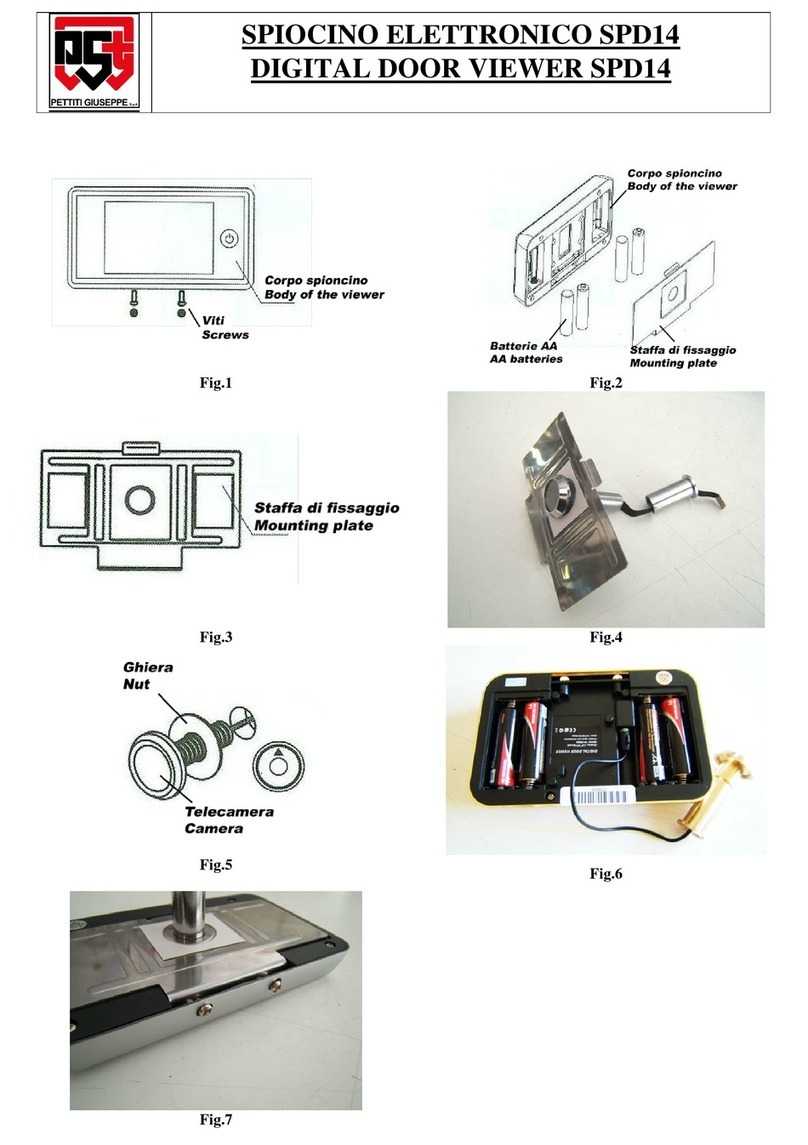
Pettiti Giuseppe
Pettiti Giuseppe SPD14 quick start guide

Hills
Hills Supa Fold 230 instruction sheet
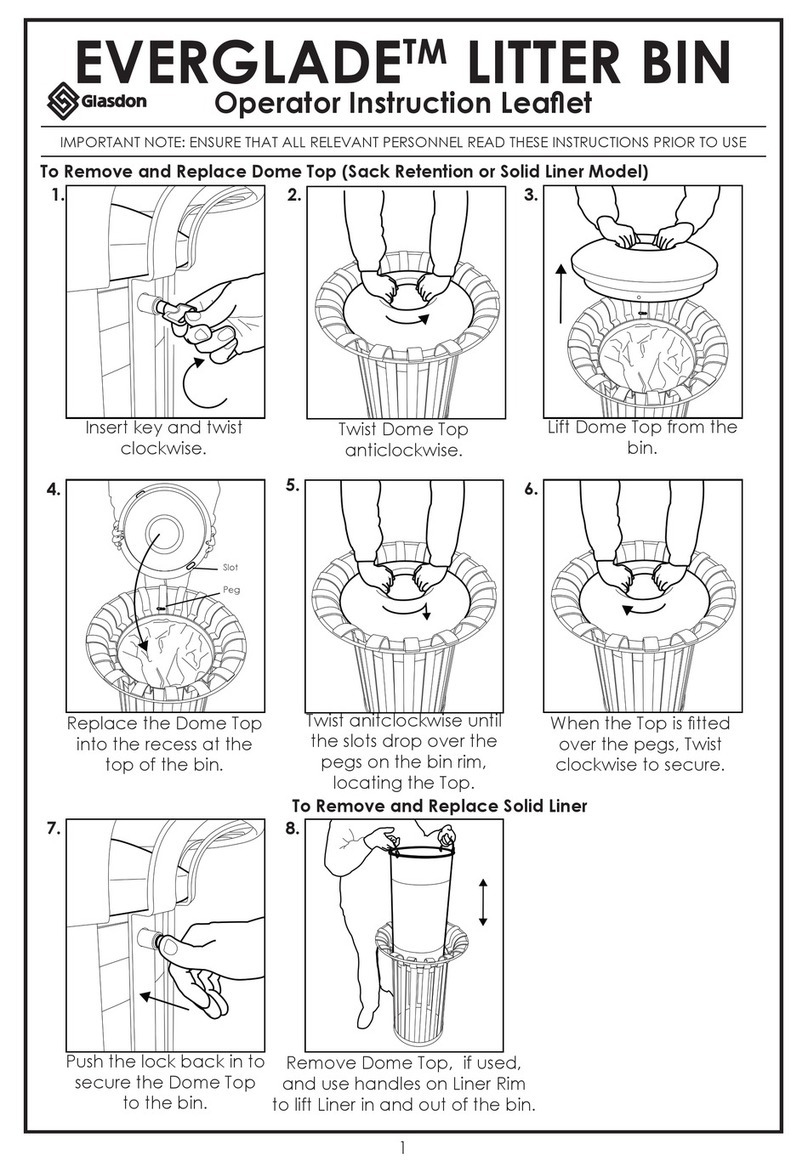
Glasdon
Glasdon EVERGLADE LITTER BIN Instruction leaflet
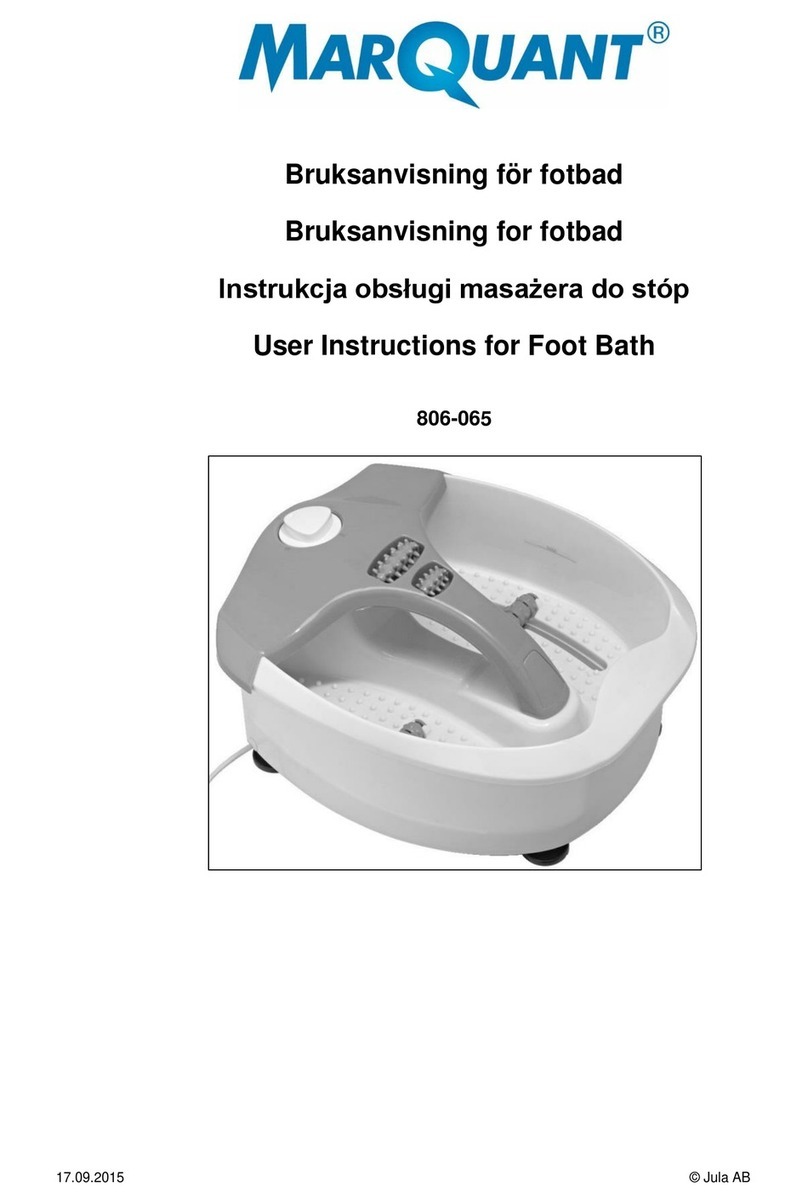
Marquant
Marquant 806-065 User instructions

Odor Crusher
Odor Crusher Ozone Armor Clean instruction manual

Southern Enterprises
Southern Enterprises CK622500TX-Espresso Finish Assembly


